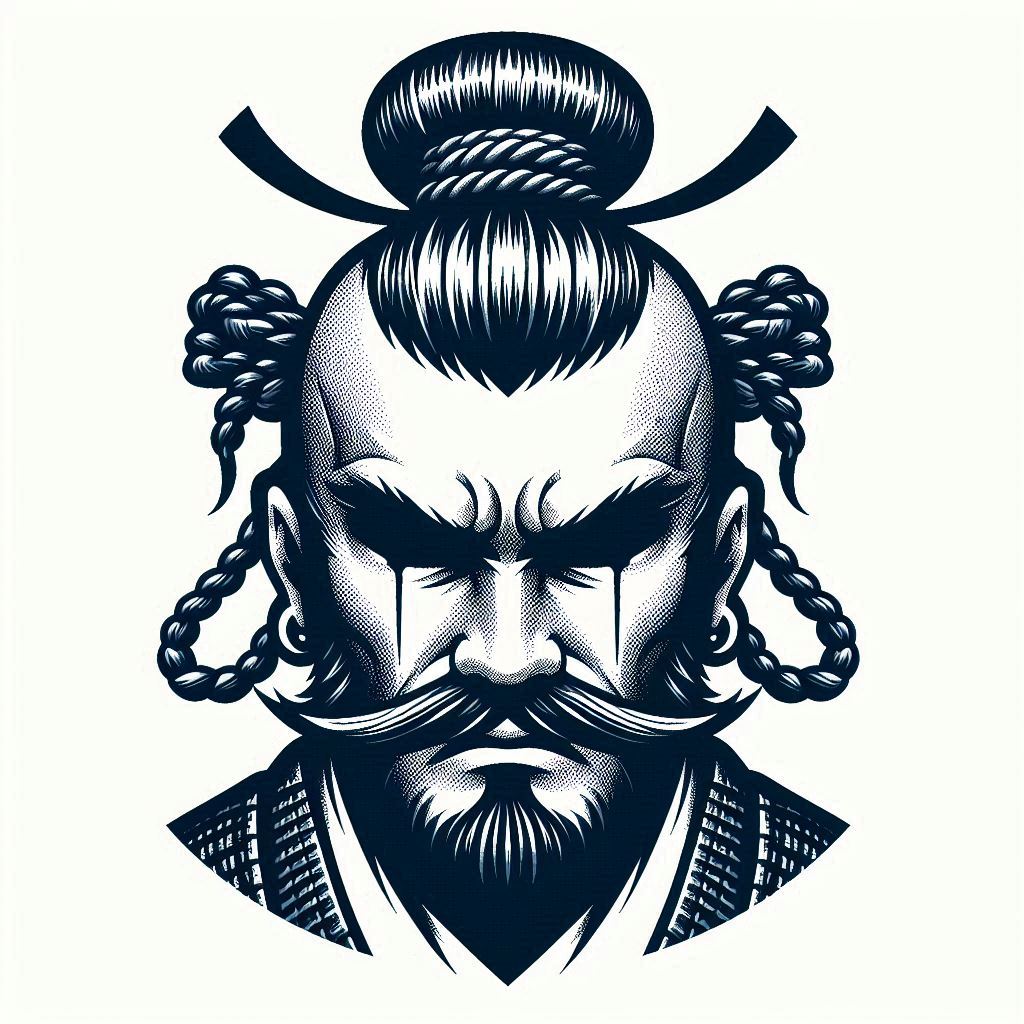日本武士頭的起源與消失
武士頭(ちょんまげ, Chonmage)是日本武士階級常見的一種髮型,特徵是將頭髮剃掉頭頂部分,並將剩餘的頭髮紮成一束小辮或髮結,通常固定在頭頂或後腦。這種髮型在日本歷史中擁有極其深遠的意義,並不僅僅是美學上的選擇,它象徵著武士的社會地位、身份認同以及對傳統的忠誠。
武士頭源自日本古代,最早在奈良時代(710-794年)便有所出現,但它在江戶時代(1603-1868年)變得更為普及,尤其是武士階層中。武士的髮型是一種身份象徵,特別是在江戶時代,政府通過這種髮型來強化社會階級分化,讓人們一眼就能辨別出武士階層的人。
典型的武士頭先將頭頂的頭髮剃光,稱為「月代」(sakayaki),剩下的頭髮會被梳理整齊並在頭頂處紮成髮結。這樣的髮型不僅讓武士們看起來更威嚴,還有實際用途。當他們佩戴頭盔時,這樣的髮型更易於頭盔穩固,並讓頭部保持通風,減少在戰鬥中因汗水而引起的頭盔滑動。其他的功能有:
1.功能性:武士頭的設計非常適合佩戴武士盔甲中的頭盔(kabuto),剃光的部分不會妨礙頭盔的貼合度,頭頂的髮結也能幫助固定頭盔。
2.身份象徵:武士階級的標誌,通過這種髮型,能表現出對自己階層和身份的驕傲。這也使得武士在社會上擁有明顯的區別。
3.文化連結:武士頭與武士道(bushido)精神密切相關,這種髮型成為了忠誠、榮譽和武士精神的象徵,成為傳統日本文化的一部分。
而相關的缺點有:
1.衛生問題:頭頂剃光後長時間裸露,容易受到陽光曝曬或低溫影響,特別是在野外活動或戰爭中,可能導致曬傷或頭部受寒。
2.維護麻煩:武士頭需要定期剃頭和整理,保持整齊乾淨。這對生活繁忙的武士來說可能是一項負擔,尤其是在長期戰鬥或旅行期間。
3.過時感:隨著日本逐漸現代化,武士頭變得與時代不符,特別是當外國勢力進入日本時,這種傳統髮型顯得古老且落伍,難以適應新時代的審美和實用需求。
武士頭的消失與日本社會的劇變密切相關,尤其是在19世紀後半葉的明治維新(1868年)。明治維新標誌著日本從封建社會向現代化國家的轉變,武士階層逐漸消亡。維新政府推行一系列改革,廢除武士階級,鼓勵全民效忠天皇,而不是個別領主。隨著武士身份的消失,武士頭也逐漸失去其存在的社會基礎。
除此之外,西方文化的引入對日本的傳統文化產生巨大衝擊,特別是在服裝、髮型等方面,西式服飾與髮型被視為進步和現代化的象徵。政府甚至頒布法令,鼓勵國民放棄傳統的和服與髮型,武士頭因此變得過時,並逐漸退出歷史舞台。
The Chonmage (ちょんまげ) is a traditional Japanese hairstyle commonly associated with the samurai class. It is characterized by shaving the top portion of the head while tying the remaining hair into a small braid or topknot, typically positioned on the top or back of the head. This hairstyle holds profound significance in Japanese history, symbolizing not only aesthetics but also the samurai's social status, identity, and loyalty to tradition.
The chonmage originated in ancient Japan, with its earliest appearances in the Nara period (710-794 AD). However, it became more widespread during the Edo period (1603-1868), particularly among the samurai class. The chonmage served as a marker of status, and during the Edo period, the government reinforced social class distinctions through hairstyles, making it easy to identify samurai at a glance.
The typical chonmage involved shaving the top of the head, known as sakayaki (月代), while the remaining hair was neatly combed and tied into a topknot. This hairstyle was not only meant to give samurai a more imposing appearance but also served practical purposes. When wearing helmets in battle, the hairstyle ensured that the helmet stayed securely in place and allowed for ventilation, reducing the chances of the helmet slipping due to sweat. Other functions included:
Functionality: The design of the chonmage was ideal for wearing samurai armor helmets (kabuto). The shaved portion prevented interference with the helmet’s fit, while the topknot helped keep the helmet stable.
Symbol of Status: The chonmage was a hallmark of the samurai class, representing pride in one’s social rank and identity. It visually distinguished samurai from other social groups.
Cultural Connection: The chonmage was closely linked to the spirit of bushido (the way of the warrior), symbolizing loyalty, honor, and the samurai ethos. It became an integral part of traditional Japanese culture.
However, there were also drawbacks to the chonmage:
Hygiene Issues: The shaved scalp was exposed to the sun and cold, making it vulnerable to sunburn or chills, particularly during outdoor activities or warfare.
Maintenance: The chonmage required regular shaving and grooming to maintain its tidy appearance, which could be burdensome for samurai, especially during extended battles or travel.
Obsolescence: As Japan modernized, the chonmage became outdated, especially with the influx of foreign influences. This traditional hairstyle appeared old-fashioned and impractical in the face of new aesthetic and functional trends.
The decline of the chonmage was closely tied to the radical transformations in Japanese society during the late 19th century, especially during the Meiji Restoration (1868). The Meiji Restoration marked Japan’s transition from a feudal society to a modernized nation, leading to the gradual disappearance of the samurai class. The government implemented a series of reforms, including the abolition of the samurai, encouraging national loyalty to the emperor rather than individual lords. With the loss of the samurai's social status, the chonmage lost its significance.
Additionally, the introduction of Western culture had a profound impact on Japan’s traditional customs, particularly in areas like clothing and hairstyles. Western fashion and hairstyles were seen as symbols of progress and modernity. The government even issued decrees promoting the abandonment of traditional Japanese attire and hairstyles. Consequently, the chonmage fell out of fashion and gradually disappeared from Japanese society.

照片:DALLE3
- 1
- 2
- 3
- 4
